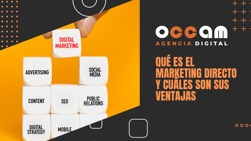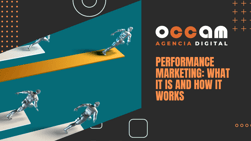Index Content
The 4C's of marketing are four key elements in today's marketing and sales process: Consumer, Communication, Convenience and Cost. They must be known and taken into account in order to develop a successful marketing strategy.
Origin: evolution of the 4Ps
The so-called 4Cs of marketing (Consumer, Communication, Convenience and Cost) are the result of the revision of a previous theory, that of McCarthy's 4Ps: Product, Price, Place and Promotion. This American accountant developed his theory in the 1960s, in the context of the "marketing mix", i.e. the search for a practical application of theoretical marketing concepts.
However, the evolution of the market, consumer patterns and consumers themselves have made this strategy obsolete over the years. The 4P theory was criticised for being too product-oriented and not consumer-oriented, and the 4Cs of the publicist Robert Lauterborn were born from this revision in the 1990s. They are therefore the result of transforming McCarthy's 4Ps into a new theory that is oriented according to the consumer's perspective.
In this way, the product is replaced by the consumer, price by cost, place by convenience and promotion by communication. As can be seen, the new 4Cs correspond to the same concepts as McCarthy's, changing only the perspective from which they are viewed, the consumer. Placing oneself in the consumer's place helps to understand more clearly what the consumer wants, as well as what the competition offers. Let's learn a little more about each of these four elements.
Consumer
This is the most important element of all, just as the product was in the previous conception. In this new paradigm , the aim is to attract the consumer to the product, and not to deliver the product to the consumer. It may seem a trifle, but this change of direction reflects, as we said, a change of paradigm, of market and of consumer model.
As the starting point is the customer, the consumer, companies put a great deal of effort into trying to identify what kind of person would be interested in contracting their services or buying their products. They analyse what added value a product offers, what it reflects, what advantages it offers, what purchasing power the person who buys it should have, etc. In short, a semi-fictional profile of an ideal customer is created. This is based, however, on real data and well-founded assumptions, such as behaviour patterns, motivations, objectives, etc. This is what is known as a buyer persona.
Communication:
The replacement of the word promotion by communication is an excellent reflection of the paradigm shift. Promotion clearly referred to the objective of selling a product or service. It is a much more reduced communication, oriented towards a single objective: to sell. Today we talk about communication, a much broader concept that goes beyond contact with a sales objective. Communicating with the consumer includes creating a relationship with him, informing him of the benefits of the product, creating a relationship, in short, that goes beyond the act of buying and selling. Moreover, it is increasingly common for companies to have an objective of transparency and traceability. That is, that the consumer can see the ins and outs of the company, its organisation, its accounts, its suppliers, its values, its modes of production.
In short, a new form of communication that responds to the new needs of the customer who, more demanding and concerned, is not satisfied with just knowing the price and the material of the product, but is concerned with many other aspects of the company, as it is no longer just a point of sale. Buying from a business or contracting a company nowadays means sharing and accepting its values and principles, and to do so, the company must communicate them.
Convenience:
Previously, place was included, understood as all the points of sale where the product was available. But this term was replaced by another, no longer broader, but different: convenience. It is about adapting the purchasing process as much as possible to the customer, so that he or she chooses our company. Convenience is concerned, for example, with the online purchasing method, the ease of going through our website, the distribution of physical points of view... In short, bringing the product closer to the customer so that the purchase is as comfortable, easy and satisfactory as possible.
In marketing terms, convenience would be equivalent to walking with the customer throughout the buyer's journey: Recognition, consideration and decision. Accompanying them through the different stages and making the leap from one to the next as quick and comfortable as possible.
Cost:
Cost is what the consumer is willing to give in exchange for obtaining a product or service. It does not refer only to price, like the previous P, but rather to everything that the consumer gives in the process of satisfying a need. We are talking, for example, about time. A consumer will be willing to travel further for a product if he considers that this loss of time will be rewarded, either by better quality, a lower price, etc. The change from "price" to "cost" reflects what new elements the consumer takes into account when deciding on a product. Previously, price referred only to economic aspects such as sale price, offers or prices of other competitors.
Knowing these four elements will help you to create a more effective marketing strategy and, above all, adapted to the demands of today's market and consumers. However, it is good to remember that the creation of these four concepts is just an evolution of an already obsolete system that did not start from the right point. Therefore, part of the importance of taking them into account includes critically analysing them and understanding at what point one of them should be modified because it no longer matches the behaviour of the customer or the market.




